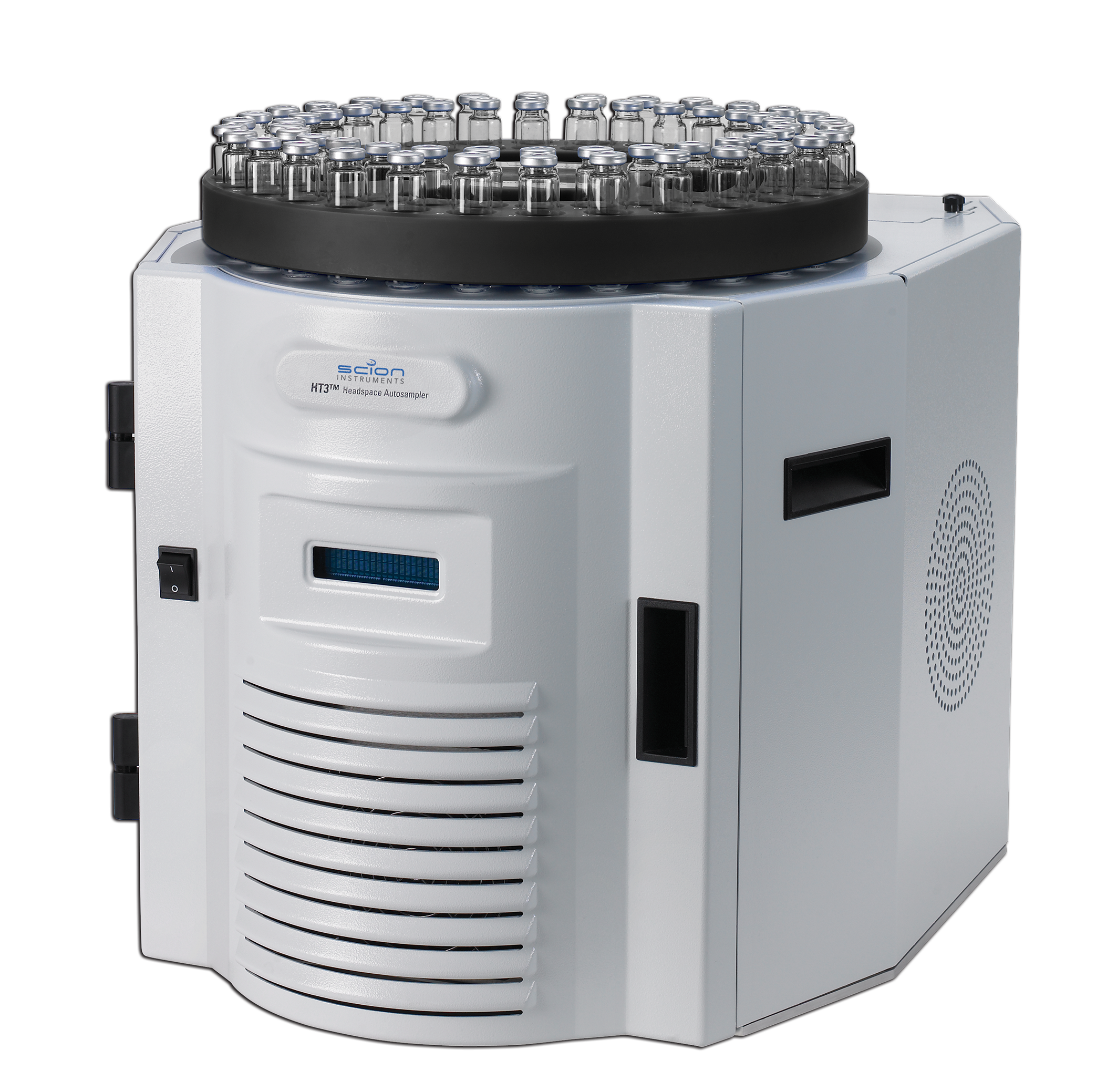
Static and Dynamic Headspace System - HT3
Static Headspace Gas Chromatography
The Static Headspace, HT3 from SCION Instruments combines static and dynamic headspace analysis techniques into one easy-to-use unit, saving you time, bench space and money.
Built on proven static headspace technology, the HT3 Headspace Analyzer provides the following added benefits:
- Sensitivity: Increased sensitivity from 50 to 100 times with the Dynamic Headspace option dependant on compound
- Accuracy: Accurate and precise results with electronically controlled flow and pressure
- Temperature: Up to 300°C temperature throughout the sample pathway
- Scheduling: Single scheduling for multiple methods and techniques
Product Description
Dramatic improvements in sensitivity are achieved with the new Dynamic Headspace option, while maintaining the ruggedness and reliability of a traditional Static Headspace instrument.
Highlights
- Standard integrated 60-position autosampler with 10-position platen heater provides true walk away automation
- Increased sensitivity from 50 to 100 times with the Dynamic Headspace option (compound dependent)
- Removable sample path for trouble-free maintenance
- High temperature capability to 300°C expands range of applications
- Inert sample pathway including transfer line, sample needle and loop provide superior analytical results by eliminating adsorption and reducing carryover
- Automated Leak Check and Benchmark for quick troubleshooting
- Automated method development using Method Optimization Mode (M.O.M.)
- 21 CFR Compliance
- Built-in Mass Flow Controller ensures consistent flow and pressure for all samples regardless of external conditions
Methods
- USP <467>
- EPA Method 5021
- RSK-175
Technical Specifications
Some key uses of static headspace gas chromatography in the oil and gas industry include: gas analysis to assesses the quality and potential of hydrocarbon reservoirs; oil analysis for the characterisation of crude oil and the assessment of potential environmental and health risks; gasoline blending to ensure compliance with regulatory requirements and assist in the production of blends; environmental monitoring to assess the potential impacts of the industry on the environments; and, finally, optimizing refinery operations and process to ensure the production of high-quality petroleum products.
Software
Static Headspace Gas Chromatography is an important tool in chemical. Here are some of the primary applications of this technique in the chemical industry:
- Residual Solvent Analysis: This helps detect levels of volatile solvents such as ethanol, methylene chloride, and benzene, to ensure safety standards and regulatory limits are met.
- Quality Control: It is used to examine the volatile impurities and contaminants in raw materials, intermediates, and finished products, to guarantee optimum quality, purity, and consistency of the chemical products.
- Odour Analysis: This technique is implemented to identify and measure the volatile components that form the aroma or off-odour in products like perfumes, cosmetics, and household chemicals.
- Petrochemical Analysis: It is employed for the determination of hydrocarbon composition, for characterizing volatile impurities, and for assessing product quality.
- Chemical Research and Development: To analyze the volatile compounds, identify reaction products, and optimize process conditions, HGC is often employed.
- Drug Analysis: It is used to detect and quantify volatile compounds present in drug samples, for drug profiling, to verify the purity of illicit substances, and to recognize new psychoactive substances.
- Fire and Arson Investigations: By recognizing the presence of accelerants, which may suggest arson, Headspace Chromatography helps forensic scientists in determining the cause and origin of fires and in providing evidence for legal proceedings.
- Toxicology and Postmortem Analysis: It is used to observe and quantify volatile substances, including alcohol, volatile drugs, and chemical poisons.
Upgrades
Headspace chromatography has numerous applications in the pharmaceutical industry. Its key uses include:
- Residual Solvent Analysis, which helps to ensure compliance with regulatory guidelines.
- Stability Testing to ascertain correct storage conditions and product expiration dates.
- Container Closure Integrity testing to detect and quantify volatile compounds migrating from packaging materials to the product, or vice versa, to prevent contamination and ensure the desired level of product protection.
- Drug Product Testing to assess the composition and quality of pharmaceutical formulations, while also ensuring conformation to regulatory requirements and correct labelling.
